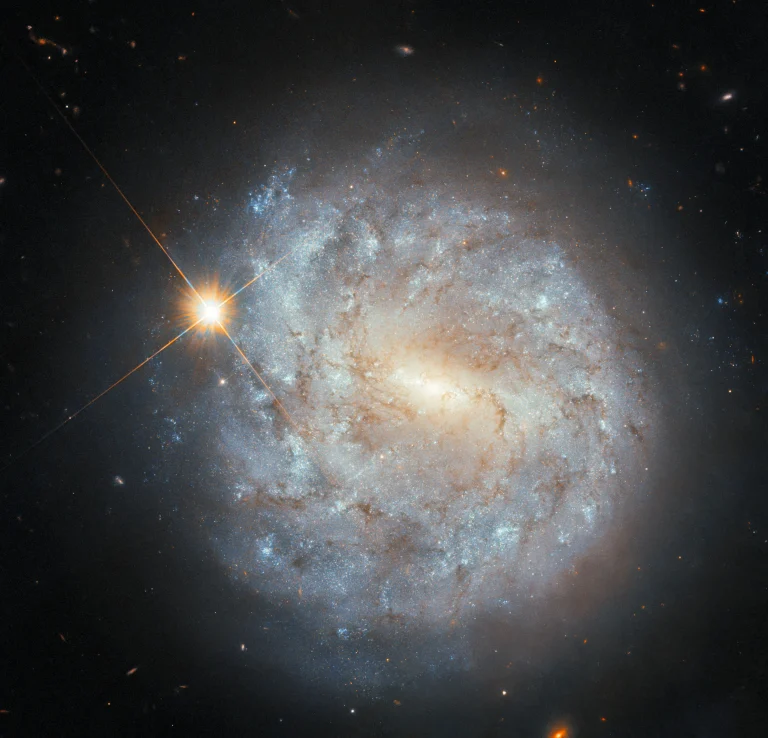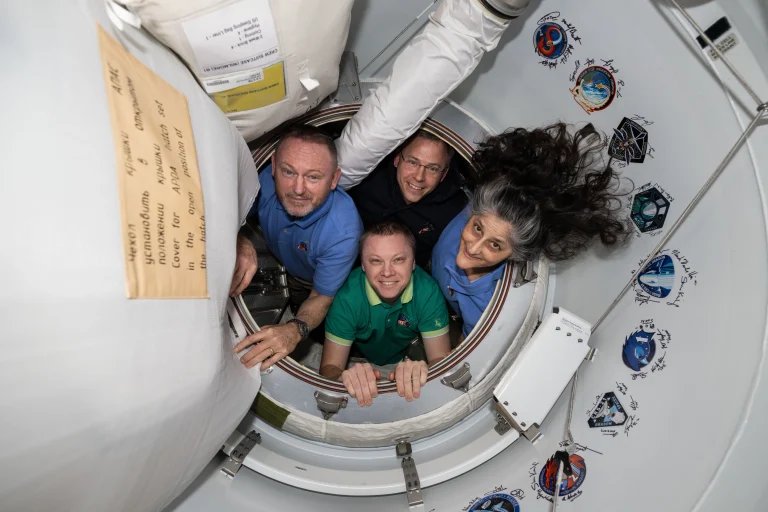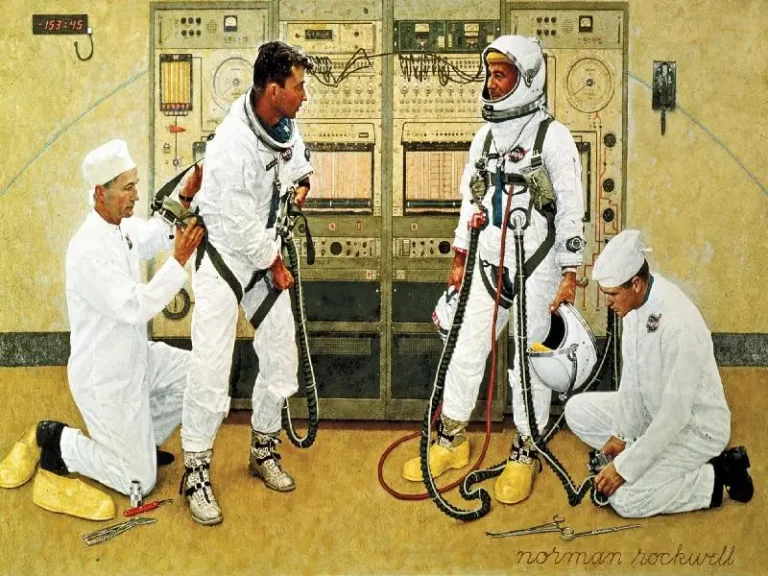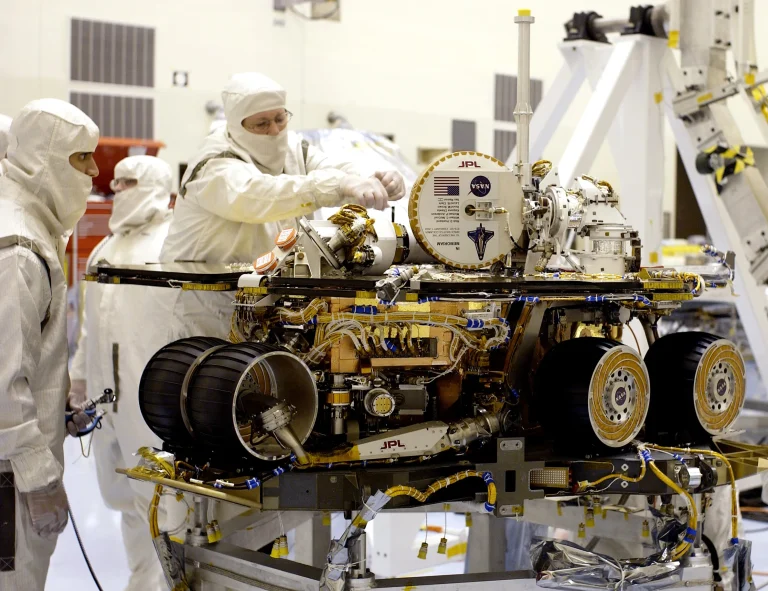This Oct. 29, 2018, image from the HiRISE camera on NASA’s Mars Reconnaissance Orbiter captures geysers of gas and dust that occur in springtime in the South Polar region of Mars. As the Sun rises higher in the sky, the thick coating of carbon dioxide ice that accumulated over the winter begins to warm and then turn to vapor. Sunlight penetrates through the transparent ice and is absorbed at the base of the ice layer. The gas that forms because of the warming escapes through weaknesses in the ice and erupts in the form of geysers.
HiRISE, or the High Resolution Imaging Science Experiment, is a powerful camera that takes pictures covering vast areas of Martian terrain while being able to see features as small as a kitchen table.
Image credit: NASA/JPL-Caltech/University of Arizona
这张由NASA火星勘测轨道飞行器上的HiRISE(高分辨率成像科学实验相机)于2018年10月29日拍摄的图像,捕捉到了火星南极地区春季发生的气体与尘埃间歇泉喷发现象。当太阳逐渐升高,冬季积累在地表的厚厚二氧化碳冰层开始升温并升华成气体。阳光穿透透明的冰层,到达其底部并被地面吸收。随着气温上升,冰层底部的气体通过冰层的薄弱点喷涌而出,形成间歇泉般的气体喷发。
HiRISE(高分辨率成像科学实验相机)是一台高性能相机,能够拍摄到火星地形的广阔区域,同时还能清晰分辨出如厨房餐桌大小的地貌细节。
影像来源: NASA/JPL-Caltech/University of Arizona







